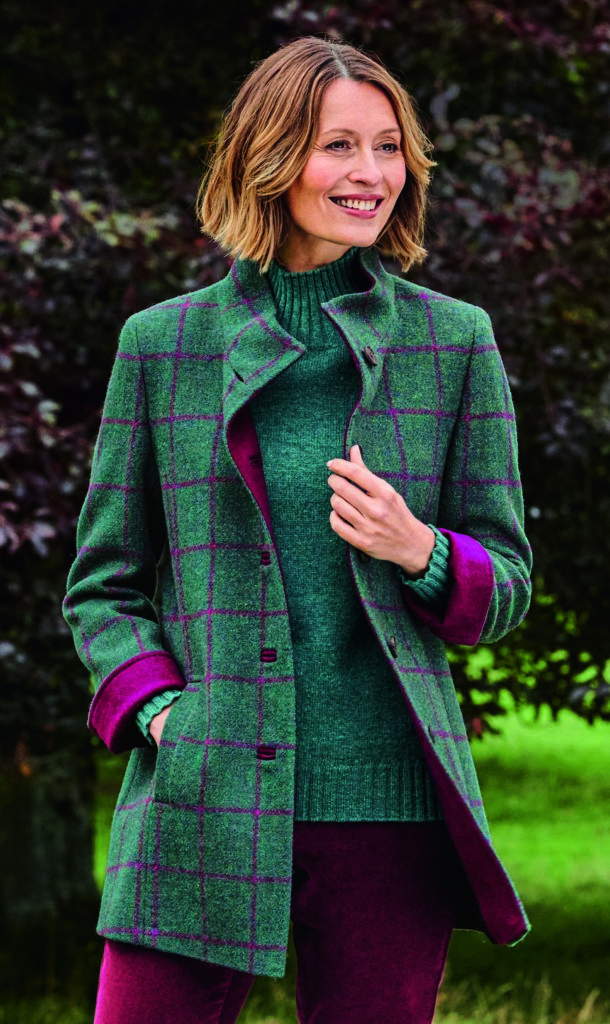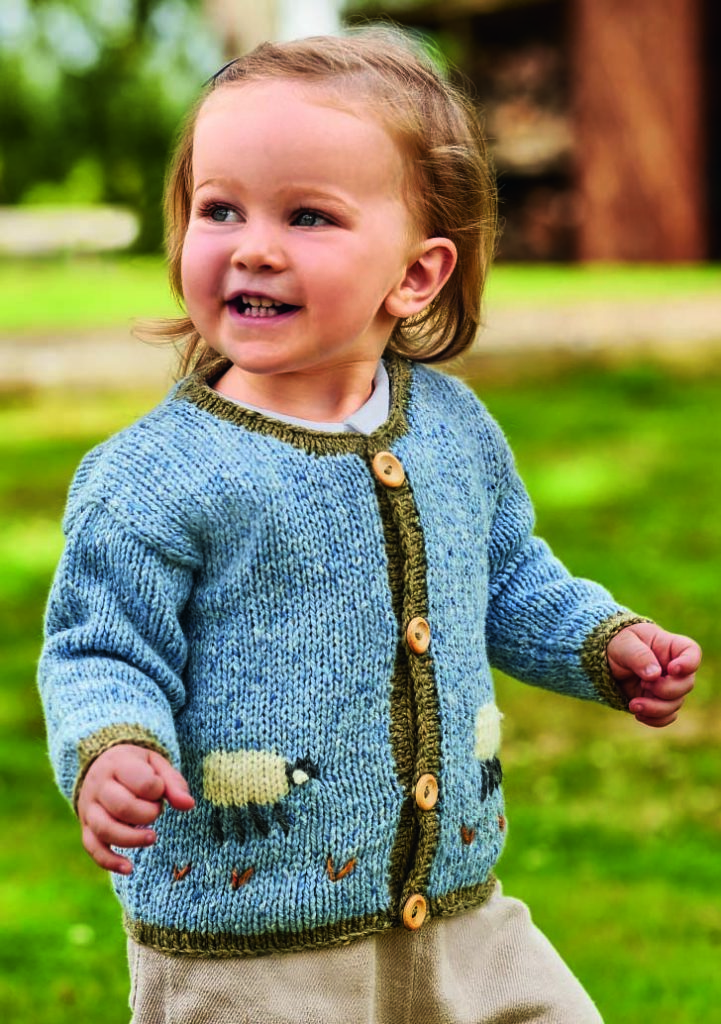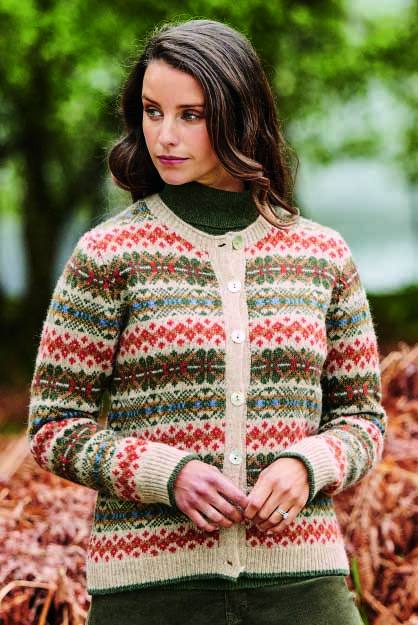Patrick Birkbeck, managing director at Perthshire department store House of Bruar, examines the return of ‘slow fashion’.
THE term “slow fashion” is generally seen as a recent invention, but the movement has been around for longer than we think.
Many people are familiar with the term “fast fashion” and all of its negative connotations. In recent years, a new phrase has been coined as a direct reaction to this: “slow fashion”.
Slow fashion is the caring, considered and calm alternative to the hurried and harmful world of fast fashion – and it’s gaining considerable traction, not least as a result of the covid-19 pandemic.
A recent McKinsey & Company survey carried out for its The State of Fashion 2020 Coronavirus Update report found that 15% of consumers in the United States and Europe expect to buy more ecologically and socially sustainable clothing as a direct result of the over-consumerism and irresponsible practices that have been thrown into light through the coronavirus crisis.
A post-lockdown report for the Royal Society for Arts, Manufactures & Commerce (RSA) found that 83% of consumers surveyed thought that clothes should be designed to last longer and be repairable. Some 58% bought fewer clothes during lockdown, with 28% reusing and recycling more than normal. Interestingly, the same report found that 27% of “Generation Z” – the 18-24 year olds who are generally associated with fast fashion – want to support socially and environmentally responsible brands.
What is fast fashion?
As the term suggests, everything about fast fashion is done at speed. Trends are quickly identified, garments are hurriedly made and rushed out to market, items are bought and delivered in the blink of an eye, then worn a couple of times before moving on to the next new thing.
It’s a phenomenon that’s largely associated with young, online-only brands that update their websites with hundreds of products every week.
Intense competition leads to customers who increasingly expect faster service and lower prices.
But all of this has a knock-on effect.
What are the problems with fast fashion?
The frenetic pace of fast fashion has potentially damaging effects from cradle to grave – from choice of raw materials and how these are sourced, through the treatment of suppliers and workers, manufacturing processes and impacts, and eventual disposal.
- Low quality garments
The speed of manufacture has an inevitable impact on the quality of garments produced. The materials used are frequently cheap – often synthetic, the stitching suspect and the finishing poor. There’s just no time to quality check before the next new trend hits the machines.
- Environmental impact
The substandard quality of manufacture and finished product and the transient nature of the trends mean that all too often items are discarded after only a few wears. In the UK, 30% of discarded clothing ends up in landfill and A.M.Custom Clothing reports as much as 40% of manufactured clothing is never sold or worn.
- Unethical working practices
Pressure on price increases the risk of exploitation along the length of the supply chain with growers and factory workers particularly vulnerable to poor working conditions and low wages. Corners are cut at every turn with potentially serious environmental effects.
What is slow fashion and why is it on the rise?
Growing awareness of the damage caused by fast fashion has led to the emergence of the slow fashion movement. Fashion website Lyst notes that the term “slow fashion” generated more than 90 million social impressions in 2019, as changing shopping behaviours started to take root.
Slow fashion is the opposite of fast fashion in every way. It’s about responsible sourcing, care of manufacture, quality of materials, and longevity of garment life.
Suppliers take care to understand the provenance of their stock and ensure that items are carefully made, building sustainable clothes that are made to last, often using natural materials with lower environmental impacts.
As far as the customer is concerned, buying decisions are considered and unhurried. Time is taken to research the best options. Thought is given to how an item will complement an existing wardrobe. This often leads to the purchase of investment pieces, which may cost more, but are of a quality that is built to last, wear after wear. These pieces are frequently of a timeless design that can bypass fleeting fashion trends to remain relevant for years to come, to the extent that items may become heritage pieces that are passed down through generations.
The lockdown effect
And the movement is spreading. There’s increasing evidence that lockdown has led consumers to reconsider their approach to fashion to embrace a more sustainable process, collect more enduring pieces and curate a more capsule-based wardrobe.
What does this come down to? Perhaps the covid-19 pandemic has sown a seed of awareness about humankind’s impact on the planet and our combined responsibility to rein in over-consumption and reduce global inequalities for the benefit of future generations.
The challenge, when things return to whatever the new normal will be, is to maintain the profile of sustainable fashion in the face of what many envisage will be a fury of discounting as struggling companies fight for survival. The RSA found that 40% of consumers are looking forward to buying clothes again post-pandemic. McKinsey & Company predicts, however, that, particularly in the high end market “many consumers will be looking for so-called ‘investment’ pieces — minimalist, last-forever items — that feel more responsible given the state of the world.”
‘Slow fashion’ brand examples

Harris tweed
Hand crafted using traditional methods on the Isle of Harris for generations; Harris tweed is woven into island life. The only fabric in the world to be protected by an act of parliament, everything from the pure virgin wool, to the dying, spinning and finishing of the cloth originates in the Outer Hebrides. Owning a piece of Harris tweed is to play your part in sustaining a way of living that’s been at the heart of this Scottish community for centuries.

Julie Dillon knitwear
Based in Dublin, Julie Dillon uses 100% Irish wool to hand loom her range of brightly coloured children’s knitwear. Inspired by her surroundings, sheep play a big role in her cute designs, which also feature other animals and motifs.

Fair Isle knitwear
The distinctive patterns that characterise the Fair Isle knitwear range have their roots in centuries of island history. The Fairislers have been handcrafting knitwear in pure Shetland and Fair Isle wool and passing their signature designs down through generations since before the 1600s.

Heathergems
From its base just down the road in Pitlochry, Heathergems has been crafting jewellery from heather collected from the Perthshire hills for more than 50 years. Its unique designs are inspired by the colours of the landscapes around it; to own a Heathergems piece is to carry a little bit of Scotland with you wherever you travel.
TAGS

